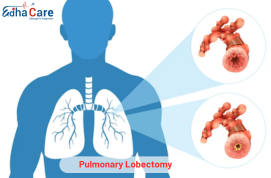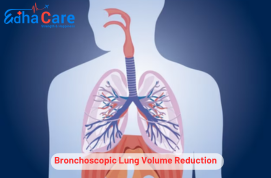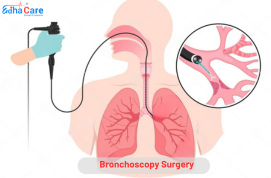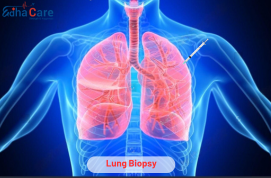Pulmonary Lobectomy

During a pulmonary lobectomy, a damaged lung lobe or section is removed through surgery. These medical conditions may include tumors that are harmless, lung cancer, or infection. The surgical procedure is usually carried out under general anesthesia. The surgeon creates a chest incision and meticulously dissects the bronchi, blood vessels, and surrounding tissues of the afflicted lobe. To preserve respiratory function, the remaining tissue from the lungs is carefully sealed or sutured after removal. A pulmonary lobectomy may be a component of a complete treatment strategy for a number of lung diseases. Its goal is to remove diseased tissue while maintaining acceptable function of the lungs.
Book an Appointment
About Pulmonary Lobectomy
Causes: Conditions impacting the lung lobes, such as cancer of the lungs, benign tumors, viral infections, or serious lung damage, are treated with pulmonary lobectomies. For certain diseases, removing the part of the brain that is afflicted may be essential to stop the disease from getting worse or to relieve discomfort.
Procedure: A surgical incision is made in the chest area, the patient's lung lobe's blood arteries and bronchi are dissected, and the lobe is removed. The operation is usually carried out under general anesthesia. After that, the residual tissue of the lungs is sealed or sutured to preserve breathing ability.
Postoperative Care: To encourage healing, avoid complications, and control pain following a pulmonary lobectomy, patients need to be closely tracked. In order to promote healing and maximize the efficiency of the lungs, this may entail medication, respiratory treatment, and changes in lifestyle.
Procedure of Pulmonary Lobectomy
Preparation: The patient is placed on the operating table after receiving general anesthesia. The surgical team covers the operative site and sterilizes it.
Incision: To gain access to the lungs, the surgeon makes an incision in the chest, usually along the side or back.
Exposure: The afflicted lung lobe is made visible by the surgeon spreading the ribs apart after gaining entry to the chest cavity.
Dissection: To minimize harm to nearby structures, the surgeon carefully dissects the bronchi, blood arteries, and surrounding tissues related to the afflicted lobe.
Removal: After all of the connections are separated, the harmed lobe is eliminated by the surgeon from the lung.
Closure: All remaining tissue of the lungs is appropriately sutured or closed to prevent air leaks and maintain lung function.
Drainage: breathing tubes may be inserted to drain surplus fluid and air from the inside of the chest.
Require Assistance?
Get A Quick Callback From Our Healthcare Experts
Other Specilities We Cover

Bronchoscopic Lung Volume Reduction

Bronchoscopy Surgery




